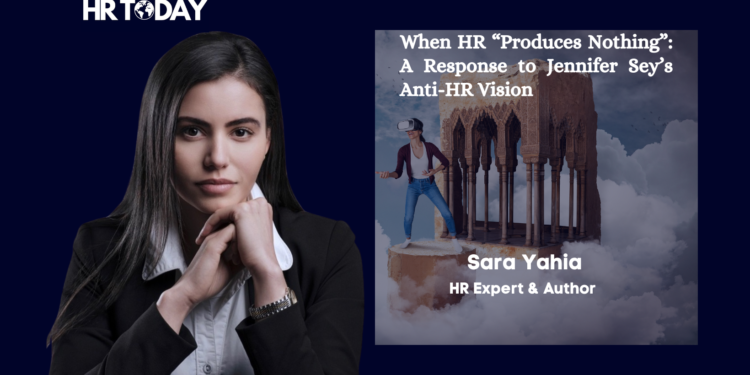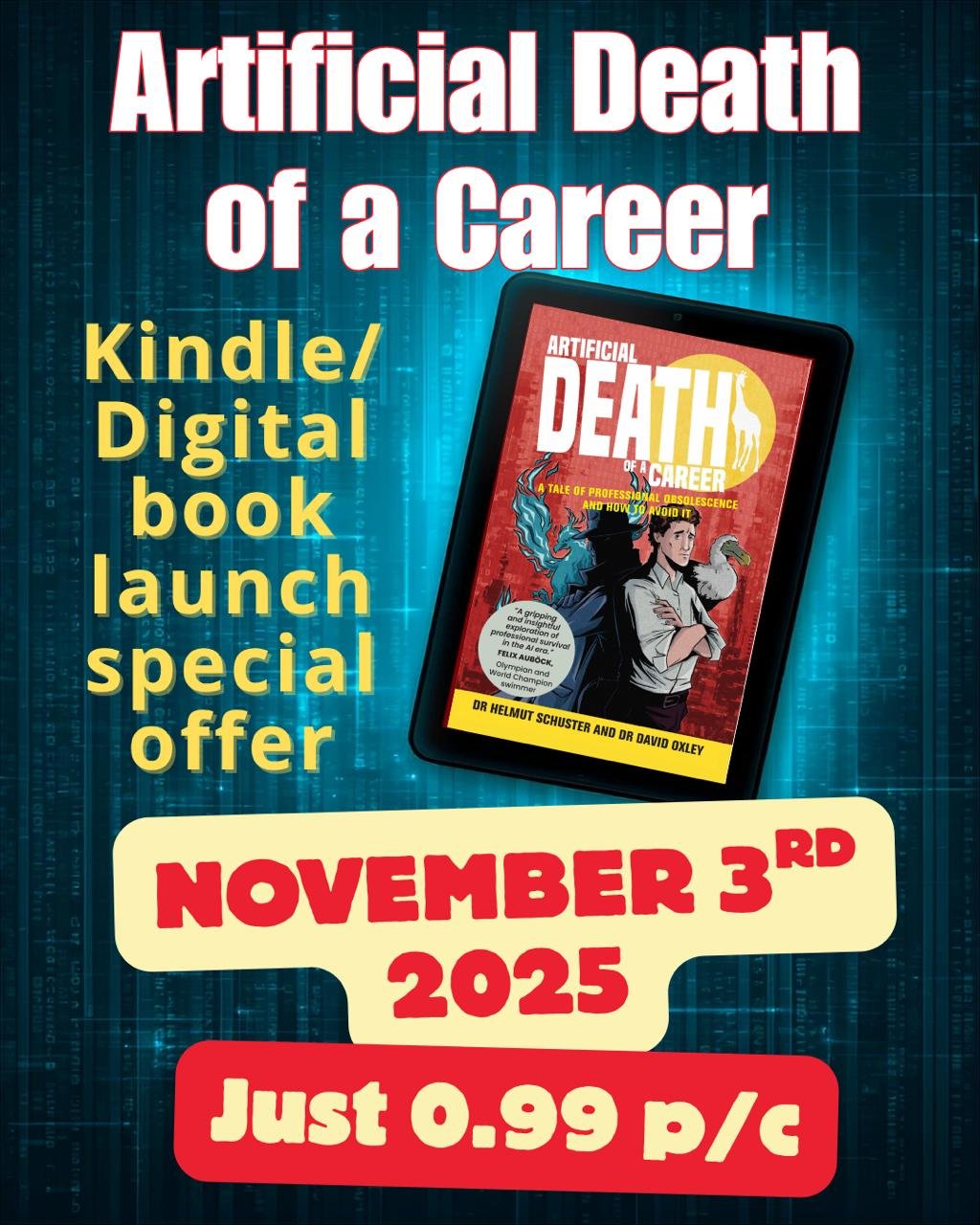Recently, Jennifer Sey, former Levi’s Brand President and current CEO of XX-XY Athletics, sparked a wave of debate with her Instagram post, in which she stated:
“I want to be the first company that has no HR. They produce nothing. They monitor words. They inhibit creativity. They’re bad for business.”
Her words struck a chord online, but not for the right reasons. By reducing the HR profession to a stereotype, Sey dismisses the impact of millions of professionals who drive meaningful results across industries. Her statement overlooks the essential role HR plays.
To give credit where it’s due, Sey isn’t entirely wrong: HR does monitor language and behavior. It isn’t about policing thoughts or stifling innovation. Much like laws and norms govern a functional society, HR’s role is to create an environment of trust, fairness, and respect. The goal isn’t restriction; it’s protection and empowerment.
Unfortunately, many leaders still see HR as a back-office function, disconnected from strategy, creativity, or business outcomes. They view HR as a “nice to have” instead of a vital partner and an invisible engine behind growth, innovation, and profitability.
WHAT SEY MIGHT BE MISSING

Sey’s frustration is aimed at HR’s compliance and risk management functions. That’s only one slice of a much broader field. HR today spans several interconnected and distinct functions:
Compliance & Risk Management: Ensures legal alignment, adherence to anti-harassment protocols, workplace safety, and ethical standards.
Talent Strategy: Drives recruiting, retention, workforce planning, and succession mapping.
People Operations: Designs processes for onboarding, employee experience, internal mobility, and performance management.
Learning & Development: Provides upskilling, leadership coaching, and growth pathways.
DEI & Culture Building: Champions equity, inclusion, psychological safety, and values alignment.
HR Analytics & Strategy: Uses data to track engagement, productivity, burnout, and retention drivers.
When people critique HR as “stifling,” they’re usually referring to rigid compliance departments, not those that build inclusive, adaptive, and high-performing cultures.
THE PARADOX OF FREEDOM

Sey’s comments reflect a libertarian-leaning narrative: innovation requires total freedom from oversight. But in reality, structure protects and creates a safe space for creativity to flourish.
Example 1: Pixar’s Braintrust model is a successful recurring feedback system designed to challenge ideas.
Example 2: Google’s Project Aristotle showed that psychological safety, often cultivated by HR practices, is a driver of innovative team performance.
On the flip side, organizations with little oversight or accountability breed toxic cultures:
At Uber, HR ignored repeated complaints of sexual harassment and retaliation. Had HR been empowered to protect well-being rather than hiding misconduct, the company might have avoided public scandal, mass resignations, and lasting reputational damage.
Activision Blizzard became a cautionary tale when HR failed to address toxic behavior. The result? Investigations, lawsuits, and CEO scrutiny that derailed performance and trust.
A lack of HR expertise can cause serious harm, but strong HR practices protect people and fuel innovation.
REAL LEADERS BACK STRATEGIC HR
Some of the world’s most respected business leaders recognize that great HR isn’t bureaucracy; it’s a force multiplier.
“HR is your most strategic partner, not your assistant.” — Jim Collins, author of Good to Great.
“HR wasn’t the brakes; they were the architecture.” — Claire Hughes Johnson, former COO, Stripe.
“They don’t control the product; they create the environment where the product happens.” — Reed Hastings.
These leaders understood that HR aligns talent, values, and innovation into a scalable system.
HR CRITICISM IS VALID
Let’s be honest: HR teams have earned the skepticism. Some dysfunctions have eroded trust in the profession:
HR weaponized: In many companies, HR is a tool to protect leadership reputations rather than employee rights. Whistleblowers are gaslighted or quietly exited, while toxic managers remain untouched.
Playing it safe: In some workplaces, fear of making mistakes stifles new ideas. Old ways stay in place simply because they are familiar, drowning innovation.
HR sits at a crossroads: it can either reinforce power structures or dismantle them to drive systemic change. But doing the latest requires backing from leadership.
Criticizing HR isn’t wrong. But abolishing it is like firing the fire department because they failed to save one building.
THE NUMBERS BEHIND HR
HR delivers measurable business outcomes:
Gallup’s meta-analysis across 230 organizations revealed that highly engaged companies have 21% higher profitability, 17% more productivity, and 24 to 50% lower turnover rates (Gallup, 2024).
Deloitte highlights that companies leveraging HR analytics are 2.1 times more likely to outperform financial peers, adding approximately 30% more to EBITDA margins (SeamlessHR, 2024).
These statistics make it clear: HR produces critical business value.
SUCCESS IN ACTION
Unilever’s former CHRO, Leena Nair, piloted a four-day workweek in New Zealand and introduced “U-Work” flexibility in the UK. Results included 50% lower attrition than national averages and a 90% drop in recruitment costs (World Economic Forum, 2021; UTS, 2021).
Buffer, a fully remote startup, embraced radical transparency, publishing salaries, and decisions. It’s great at cutting politics, building trust, and improving retention (Buffer Open Blog, 2022).
GSoft, a Canadian tech firm, replaced annual reviews with real-time manager check-ins and peer recognition, embedding continuous feedback that drives psychological safety and innovation (Harvard Business Review, 2021).
When HR drives culture, trust, and belonging, its impact is real and deeply human.
A CREATIVITY CATALYST
HR builds psychological safety through inclusive practices, respectful feedback systems, and DEI initiatives. Programs like Sony’s internal incubators illustrate how HR enables innovation as a strategic partner.
HR is now a central voice in leadership tables because:
Succession planning and talent forecasting ensure organizational agility and continuity.
Culture drives customer outcomes, delivering higher sales and valuation (CultureMonkey, 2024).
Policies (flexible work, reskilling, and intrapreneurship) are growth engines.
BOLDER, BRAVER, MORE HUMAN
Let’s enter the next chapter for HR, which demands reinvention. The future of people leadership will be:
- Radically transparent: Open salaries, feedback, and decision-making are the new drivers of trust.
- Data-informed but deeply human: People analytics will support empathy and storytelling.
- Employee-experience obsessed: Talent will choose purpose and culture over perks. HR must curate experiences.
- Builder-led: Leaders must think like product managers, designers, and strategists, co-creating environments where people do their best work.
- The next generation of HR is a mindset.
CHECKLIST
This is a checklist for all CEOs and leaders wondering if their HR team drives performance. If your answer is yes to all three (3) statements, you are on the right track.
- They are builders: they design systems that scale talent and trust instead of simply enforcing rules.
- They are data-informed and not data-obsessed: they connect analytics to human experience, not just KPIs.
- They are trusted: leaders and employees view HR as a partner and not a gatekeeper.
Expert HR will reduce attrition, increase employee engagement, expedite hiring, and enhance internal mobility.
Without HR’s invisible scaffold, companies can’t truly scale or innovate. Contrary to Sey’s claim that HR “inhibits creativity” and “produces nothing,” the evidence shows the opposite: HR builds the culture, systems, and trust that power performance and imagination at scale.
Read Also : Mind the Leadership Gap – From Learning to Real-World Impact
How the Adecco Group is empowering its employees for the future of work
Women in Manufacturing: Shamita Nandi’s Blueprint for a More Inclusive Workforce
Leadership In Talent Management: A Powerful Driver for Economic Growth
Click Here to Join HR TODAY WhatsApp Channel












